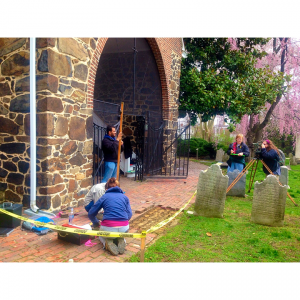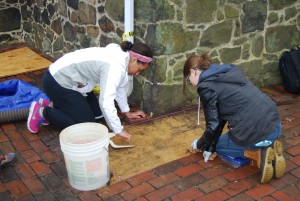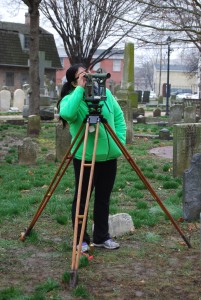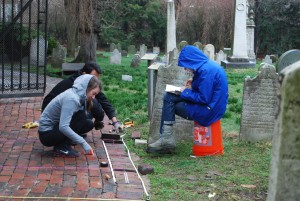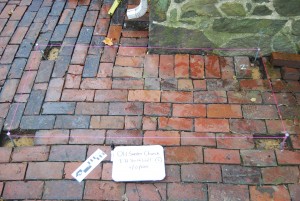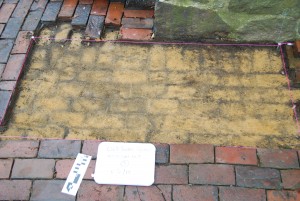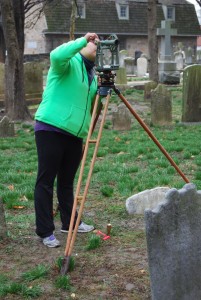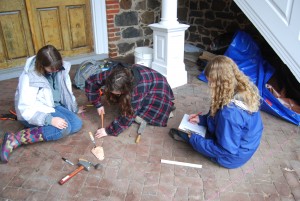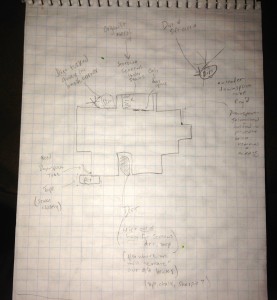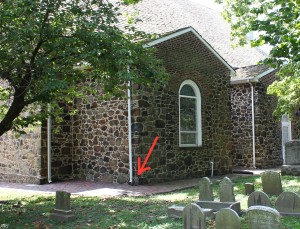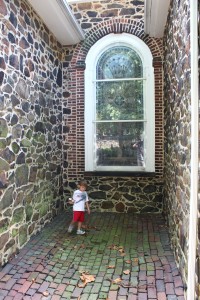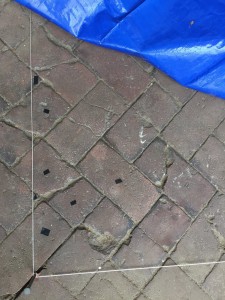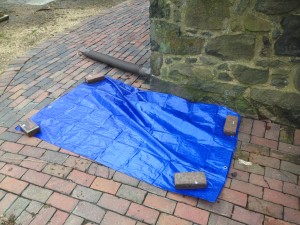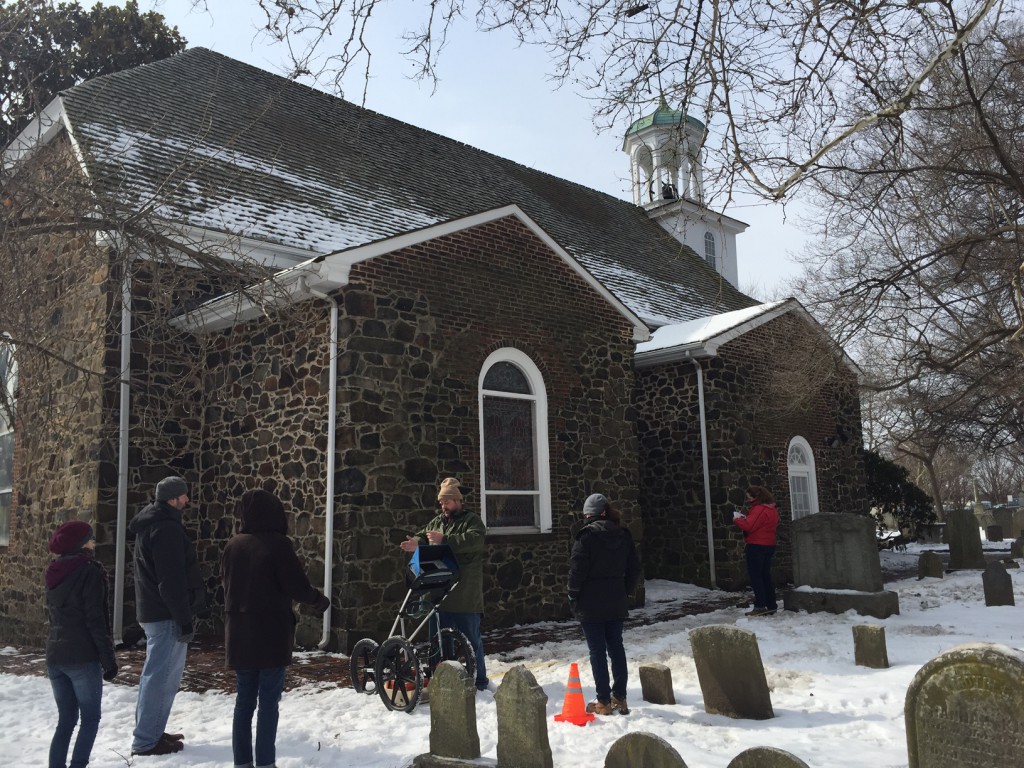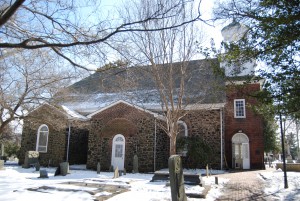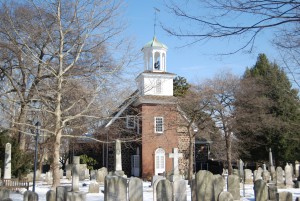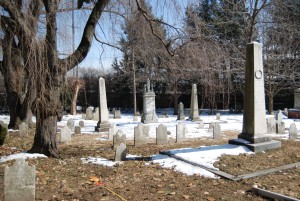Welcome to another exciting edition of Updates From the Field!
This week we worked on Friday, April 24th during our scheduled class time and came in on Saturday the 25th as well to make up for time lost due to a snow day earlier in the semester.
Signs of burning and wooden planks
We found a charcoal soil layer on Saturday perhaps linked to a 1960s fire at Old Swedes Church. This was discovered near the northeast corner of the northeast church buttress. In the picture above, you can notice signs of burning in the black organic soil as well as signs of what appeared to be wooden planks etched into the ground in fine detail. Like at the north buttress and bell tower excavations, the group working near the south buttress also discovered a base of crushed stone beneath the bedding sand of the brick paving. Within the south porch, this stone was missing, and instead the team found a layer of clay loam.
We also found more artifacts today–glass fragments from the windows of Old Swedes, wire nails, and what appeared to be a piece of burned clay molding. We are making great strides so far despite a few minor setbacks related to poor weather conditions earlier in the semester and many of the sites have made major progress in terms of discovering some very interesting artifacts and finds. The majority of the finds so far have been nails, glass, brick fragments, mortar, coal, and various pebbles and rocks.
Just another day on the job
As we have progressed in our excavations, we have grown more comfortable with the process of archaeology. We have become more adept at accurately and consistently taking depth measurements in our units. Several teams had some difficulty with holding the string with the line level too slack and with using a ruler that measured in inches instead of tenths of feet, but experience has smoothed over these issues. We have also learned which tools are more appropriate in which situations, such as when to use a brush or a trowel and when to use a rectangular trowel or a pointed trowel. Brushes were found to be more useful for the teams who had gravel layers when they were removing the soil directly above and around the rocks. They also come in handy when preparing a level for photographic documentation to remove marks from trowels, dustpans, buckets, and footprints. Rectangular trowels are especially useful near the edges of the unit walls and in cleaning up and straightening the walls themselves.
If we can dig further in the next couple of classes, we may be able to link the artifacts to unique and exciting things relating to colonial culture in Old Swedes as well as to important and interesting chapters of the Church’s history. The possibilities are endless. But what makes this so exciting isn’t just the excavation, it’s also the experience. Learning archaeological procedures, managing equipment such as the transit, techniques for measurement, documentation, analyzing the soils, and studying the artifacts and separating soils are all important for us as students. We take these experiences with us wherever life leads us and we will take what we have learned from Old Swedes and become better archaeologists.
A great day at Old Swedes
Aside from our work in the site, we plan on giving two separate presentations about our work at Old Swedes. The class split into two groups; one group will present at the Early Colonial Delaware Symposium on May 9th and the other will present at Old Swedes Church on May 17th. We’ve already began discussing our plans and have reviewed notes on public speaking to improve the quality of our presentations. Hopefully we can discover more about the site before we begin our public presentations. This has been our updates from the field, look forward for more exciting news next week.




